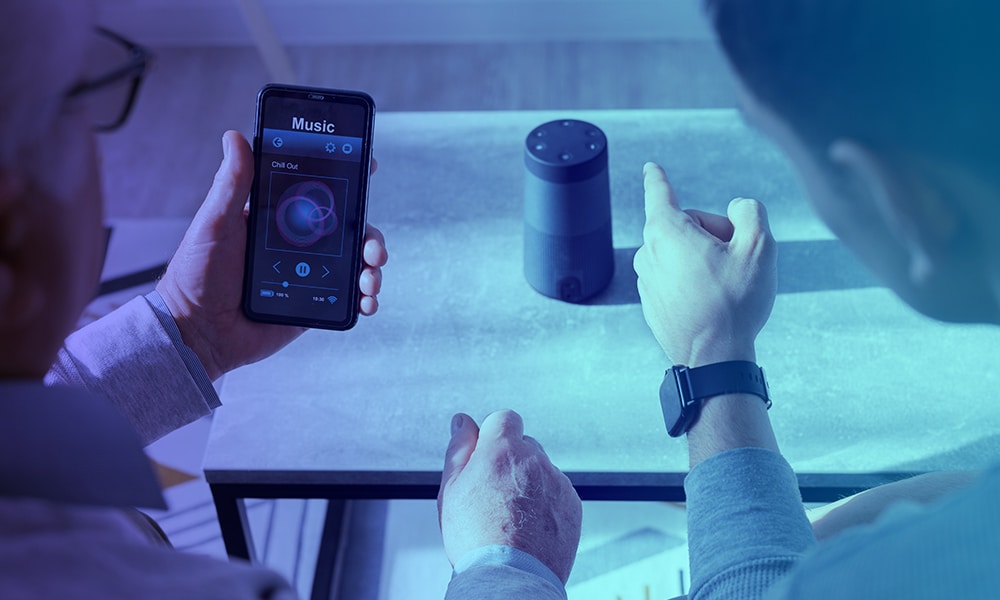Accurate ASR (Automatic Speech Recognition) starts with the right data—not “more” data. Your collection plan should mirror how real users speak: accents and dialects, background noise, device mics, channel codecs, and even how people switch languages mid-sentence. This guide walks through a practical, privacy-first process to collect, label, and govern audio that models (and compliance teams) can trust.
The Process of Audio Collection for Speech Recognition Models
1) Set the data goal (before you record)
Define what the model must understand and under which conditions. A tight scope prevents wasted collection and makes QA measurable.
- Use cases: dictation, contact-center, commands, meetings, IVR
- Languages/dialects & expected code-switching
- Channels & environments: phone, app/desktop, far-field; quiet vs noisy
- Target metrics: WER/CER, entity accuracy, diarization, latency (if streaming)
- Deliverable: one-page Data Spec everyone signs
2) Sampling plan: who, where, how much
Balance speakers, accents, devices, and noise so results generalize and stay fair. Plan hours per “slice” up front.
- Speaker diversity: region, age range, gender, speech rate
- Accent quotas per dialect (e.g., 10–15% each)
- Utterance mix: read, conversational, command/query
- Vocabulary focus: domain terms, numbers/dates/units
- Strata: device × environment × accent with minimum hours
3) Consent, privacy, and compliance
Lock permissions and data handling before onboarding anyone. Treat PII/PHI as a separate, governed asset.
- Clear consent (purpose, retention, sharing, opt-out)
- De-identify early; store re-ID keys separately
- Residency & laws: HIPAA/GDPR/local rules
- Access: least-privilege + audit trail
4) Recording setup and protocols
Consistent capture reduces label noise and boosts model quality. Standardize hardware, settings, and scenarios.
- Hardware: approved phones/mics; log make/model
- Settings: WAV/FLAC, mono, 16-bit, 16 kHz+
Scenes: quiet baseline + controlled noise (café, traffic, office) - Prompts: scripts, role-plays, command lists
- Operator notes: mic distance, room size, seating
5) Metadata that matters
Great metadata makes your dataset reusable and debuggable. Capture only what you will use.
- Language/locale, accent tag, device/OS, mic type
- Environment, SNR estimate, channel (PSTN/VoIP)
- Pseudonymous speaker fields (age range, region, consent version)
- File naming: <project>_<lang>_<speakerID>_<device>_<env>_<session>_<utt>.wav
6) Annotation guidelines and tools
Consistent labels beat bigger datasets. A concise, versioned style guide is non-negotiable.
- Rules: casing, punctuation, numerics, hesitations, overlaps
- Tags: code-switch markers, proper-noun dictionary, locale spellings
- Diarization workflow: fix turns, mark overlaps; word timestamps
- Tools: hotkeys, QA panel, lexicon prompts
7) Quality assurance (multi-layer)
Automate what you can, then sample with humans. Track agreement and fix hotspots early.
- Automated gates: format, clipping/silence, duration, metadata completeness
- Human QA: dual transcribe + adjudication; track IAA
- Gold set (2–5%): expert labels to benchmark vendors/annotators
- Metrics: WER/CER (by accent/device/noise), entity & diarization accuracy, style compliance
8) Train/val/test splits that don’t leak
Keep speakers separated across splits to get honest scores. Balance “hard” conditions in test.
- Speaker-level separation (no cross-split speakers)
- Balanced accent/device/noise ratios
- Hard cases: low SNR, overlaps, fast speech, heavy code-switching, jargon stress tests
9) Secure storage and governance
Speech data is sensitive—govern it like source code and PII.
- Encrypt at rest/in transit; separate PII from audio/text
- RBAC, time-boxed vendor access, audit logs
- Lifecycle: retention, deletion workflows, versioning for re-labels
10) Packaging and delivery
Make drops plug-and-play for modelers so they iterate faster.
- Bundle: audio + transcripts (JSON/CSV), word timestamps, speaker labels, confidences
- Data card: methods, demographics, limitations, QA stats, license
- Changelog: what’s new (accents/devices, guideline updates)
Mini checklists
Recorder Onboarding
- Signed consent & locale captured
- Device/mic verified
- Test clip passed QC
Pre-annotation QC
- Codec/sample rate correct
- No clipping/dead silence
- Metadata complete
- Filename schema valid
Annotation QA
- Style guide followed
- Timestamp accuracy OK
- Entities spelled/normalized
- IAA ≥ target (e.g., 0.9 segment-level)
Top Use Cases for Automatic Speech Recognition
Customer Experience & Contact Centers

- Live agent assist (streaming): Real-time transcripts trigger prompts, forms, and knowledge hits.
Example: During a billing call, ASR surfaces refund policy and auto-fills the case form. - Post-call QA & compliance (batch): Transcribe recordings to score calls, flag risks, and coach agents.
Example: Weekly QA finds missing disclosures and suggests targeted coaching. - Voice analytics & insights: Mine topics, sentiment, churn signals across millions of minutes.
Example: Spikes in “shipping delay” trigger ops fixes.
Healthcare & Life Sciences

- Clinician dictation & notes: Doctors dictate; ASR drafts SOAP notes with timestamps.
Example: Encounter notes generated in minutes, then reviewed and signed. - Medical coding support: Transcripts highlight CPT/ICD candidates for coders.
Example: “Bronchitis” and dosage terms auto-flagged for review. - Clinical research & trials: Standardize interview audio into searchable text.
Example: Patient-reported outcomes extracted for analysis.
Voice Products & Devices

- Voice commands & assistants: Hands-free control across apps, kiosks, and vehicles.
Example: “Book a table at 8 pm” triggers a reservation flow. - IVR & smart routing: Understand caller intent and route without keypress trees.
Example: “Freeze my card” goes straight to fraud workflow. - Automotive & wearables: On-device/edge ASR for low-latency control.
Example: Offline commands when connectivity drops.
Regulated & Finance

- KYC/collections calls: Transcripts enable audit, dispute resolution, and coaching.
Example: Payment plan terms verified from the transcript. - Risk & compliance monitoring: Detect restricted phrases or promises.
Example: Alerts on “guaranteed returns” in advisory calls.
Multilingual & Global

- Code-switching & multilingual support: Mixed-language turns (e.g., Hinglish).
Example: ASR handles “refund status please” within Hindi context. - Subtitling & localization: Transcribe, then translate for global releases.
Example: Auto-generated English captions localized to Spanish.
Where Shaip helps
If you want speed without quality or compliance risks, Shaip supplies the data muscle behind your ASR:
- End-to-end collection: multilingual recruiting, controlled devices/environments, consent workflows
- Expert annotation & QA: adjudication, tracking, gold-set management
- PHI-safe de-identification: healthcare-grade pipelines with human QA
- Evaluation packs: accent/device/noise-balanced test sets; dashboards for WER, entity, diarization
Talk to Shaip’s ASR data experts for a tailored collection and QA plan.









